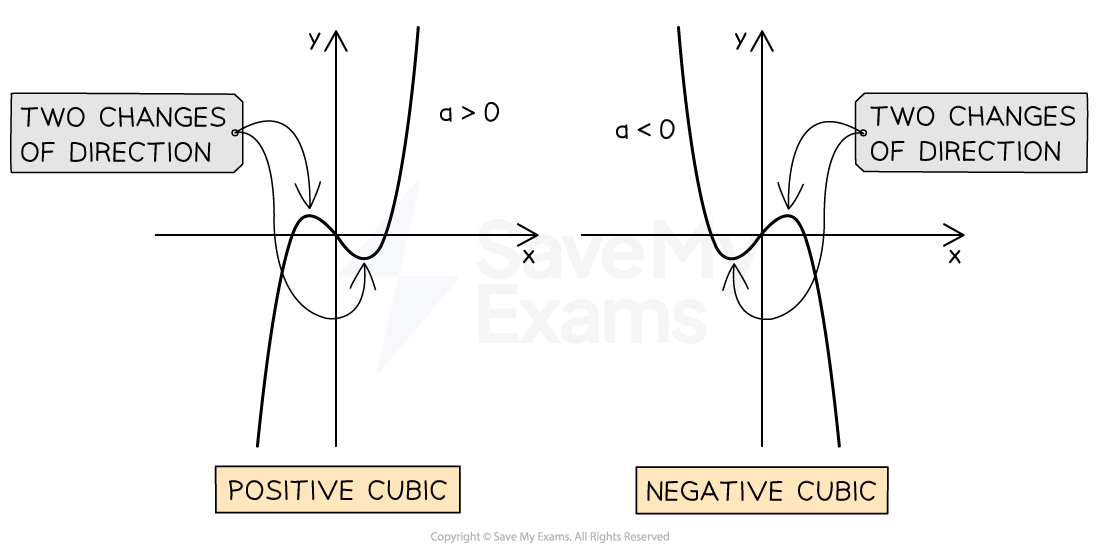Types of Graphs
What graphs do I need to know?
- You need to be able to recognise the following lines:
- Straight lines
- y = mx + c
- Such as y = 3x + 2, y = 5x - 1, ...
- Two important ones are y = x and y = -x
- Horizontal lines
- y = c
- Such as y = 4, y = -10, ...
- Vertical lines
- x = k
- Such as x = 2, x = -1, ...
- Straight lines
- You need to be able to recognise quadratic graphs
- y = x2
- y = -x2
- y = ax2 + bx + c
- You need to be able to recognise simple cubic graphs
- y = x3
- y = -x3
- y = ax3 + bx2 + x + c
- You also need to be able to recognise reciprocal graphs
, where

What does a quadratic graph look like?
- The equation of a quadratic graph is y = ax2 + bx + c
- A quadratic graph has either a u-shape or an n-shape
- This type of shape is called a parabola
- u-shapes are called positive quadratics
- because the number in front of x2 is positive
- For example, y = 2x2 + 3x + 4
- because the number in front of x2 is positive
- n-shapes are called negative quadratics
- because the number in front of x2 is negative
- For example, y = -3x2 + 2x + 4
- because the number in front of x2 is negative
- You can plot quadratic graphs using a table of values

What does a cubic graph look like?
- The equation of a cubic graph is y = ax3 + bx2 + cx + d
- A cubic graph can have two points where it changes direction (turning points)
- A positive cubic goes uphill (from the bottom left to the top right)
- The number in front of x3 is positive
- For example, y = x3 - 3x2 + 2x + 1
- The number in front of x3 is positive
- A negative cubic goes downhill (from the top left to the bottom right)
- The number in front of x3 is negative
- For example, y = -x3 + 2x2 - x + 5
- The number in front of x3 is negative
- You can plot cubic graphs using a table of values

What does a reciprocal graph look like?
- The equation of the basic reciprocal graph is
- You cannot substitute in x = 0 (division by zero is not allowed)
- You should not include x = 0 in a table of values
- You cannot substitute in x = 0 (division by zero is not allowed)
- The shape of
is shown below
- It has two two curved branches
- The branches are L-shaped
- The branches never connect!
- It has two two curved branches

Worked example
In each of the cases below, state the letter of the graph that corresponds to the equation given.
|
A
|
B
|
C
|
D
|
E
|
The graph is a straight line going uphill and crosses the x-axis above (0,0)
Graph C
It has two L-shaped branches and no y-value when x = 0








